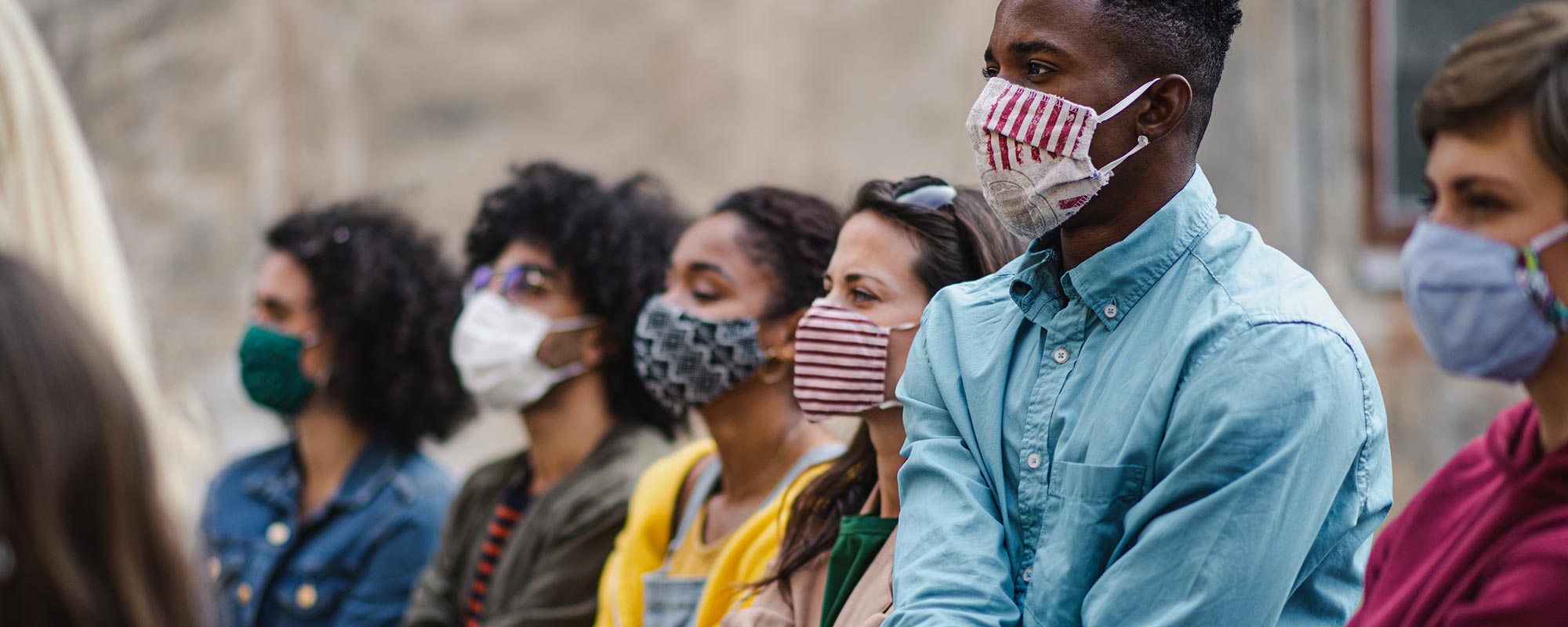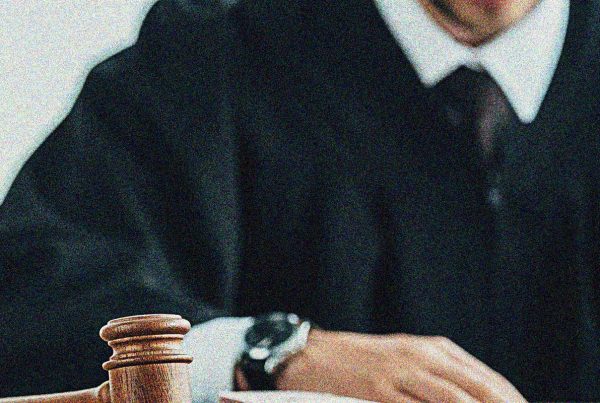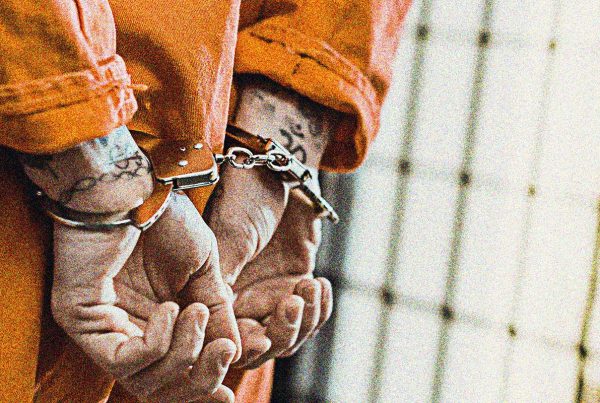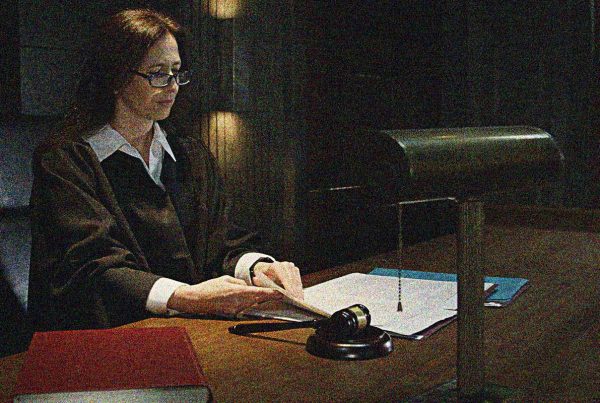November 19, 2020
During the first wave of COVID, we were quite critical of a number of the emergency orders that provincial and territorial governments enacted. Some were just poorly drafted. Many were poorly communicated. Others were, in our view, outright unconstitutional. We also raised significant concerns about the unnecessary turn to punitive enforcement that took place in some – but not all – jurisdictions. Quebec, Ontario and Nova Scotia in particular turned to police, bylaw officers to secure compliance with the law. Over $13 million in fines were collected in the space of a few weeks. Policing disproportionately impacts those in marginalized communities – including Indigenous persons, Black and other racialized Canadians, those with precarious housing and individuals living with addictions and mental illness. We found deeply troubling indications that these same patterns of systemic discrimination were repeating in the first wave of COVID-19 law enforcement actions.
Numerous jurisdictions in Canada are now in the midst of the second wave of COVID-19. As of the second week of November, the rate of active COVID-19 cases was up sharply in Manitoba and Alberta, and Manitoba’s test-positivity rate had risen to 9.5%. In both Quebec and Ontario infections had also been rising for weeks, and Saskatchewan was reporting a record number of active cases.
Quebec, Ontario, British Columbia, Alberta and Manitoba have all recently put in place more restrictive emergency measures aimed at flattening the second COVID curve. So with the second wave of COVID laws upon us, we thought it was time to focus in on a few provinces with second wave COVID restrictions to provide an update on how our civil liberties are faring.
The take away from our review is that, while the state of Canada’s civil liberties remains a significant concern in several jurisdictions, several provinces are treading more carefully than they did in the first wave. Schools and childcare remain generally open, and there seems to be an effort to keep businesses at least marginally operational. Gathering restrictions have been passed – although with the exception of Quebec and parts of British Columbia, they are not as stringent as the majority of the first wave restrictions.
In short, governments seem to be increasingly seeking ways to balance public health goals with broader concerns about the economy and the harms that arise from harsh lockdowns. This approach may benefit civil liberties broadly speaking. Freedom of movement, association, expression, security of the person – maximizing these and other rights and freedoms as much as possible has a direct tie to individual and societal well-being. Protecting individual rights is a way of protecting both mental and physical health.
Having said that, however, we must not lose sight of the fact that even the most permissive restrictions being put in place are still incredible intrusions on our liberties. It demonstrates just how much Canadians’ baseline expectations have, at least for the time being, changed.
There are also divergent approaches to enforcement – as was the case in the first COVID wave. Quebec and Manitoba have adopted highly concerning punitive enforcement measures, increasing law enforcement powers and, in the case of Manitoba, hiring private security firms to police the population. The combination of highly restrictive laws with a punitive enforcement approach represents a significant threat to civil liberties.
Quebec
The Quebec government was the first to enact broad emergency measures in response to the resurgence of COVID-19. Currently the province has established three basic levels of COVID restrictions: Level 2 – early warning (yellow); Level 3 – alert (orange); and Level 4 – maximum alert (red).
The laws governing what can and cannot happen at the different levels are detailed and complex. For our purposes we’ll focus on the restrictions on gatherings.
Level 2 restrictions are the most permissive, allowing a maximum of 10 people to gather inside or outside, with larger gatherings permitted for organized activities in public settings. Regions designated as Level 3 have a maximum gathering number of 6. In the Level 4, maximum alert category there is a general prohibition on visitors from outside your household, and all private indoor or outdoor gatherings are prohibited. The emergency order requires that Quebeckers who venture outside of their homes stay two metres apart from those they don’t live with at all times.
But, of course, maintaining these incredibly strict gathering limits at all times is not feasible. What about the broken furnace, the in-home personal support worker? Emergency services, on the street or in the home? What about all the services and organizations that aren’t shut down – kids are in school, childcare centres are operating, and many businesses and services are still operational. It simply isn’t possible to never let anyone into your home or always keep a 2 metre bubble around you. So inevitably the law contains exceptions. They are longer and much more complex than the prohibitions.
You can let people into your house if you are receiving a “service or support” that is required for health, safety, personal care or esthetics, respite, domestic help, help for activities of daily living, pedagogy or education. Outside, you can be within 2 metres of someone providing you with a service or support. If you live alone, you can invite one person over to your house or backyard. If you live in the red zone, you can travel and leave behind the red zone rules for work, study, or to practice your profession. Schools also get specific exemptions and regulations, as do protests, funerals, and places of worship.
To sum it up, Quebec’s current COVID restrictions are the broadest, most restrictive, and most complex in the country. This combination – broad, complicated and strict laws – is a recipe for arbitrary and unfair enforcement. During the first COVID wave Quebeckers got in touch with us to report that they were ticketed when the stranger walking behind them in the park stepped too close. One woman who works at a Montreal social service organization was ticketed for stopping to offer support services to a street-involved Indigenous client. Quebec civil society organizations also reported that ticketing and increased harassment of street-involved populations was commonplace and prejudiced essential public health and social service supports.
Unfortunately, Quebec has again doubled down on a punitive, police-led approach. The government has expanded police powers to quickly issue tickets and provided a telewarrant system to enable them to get warrants quickly from their squad cars. Montreal’s mayor has announced that police presence in parks would be increased to prevent people from gathering, and multiple Quebec police services have started sending police to tour high school grounds to ensure students are following the law.
As we’ve written elsewhere, punitive approaches can significantly undermine public health efforts and lead to discriminatory patterns of enforcement.
In short, the government’s strict and punitive approach to a public health crisis continues to present a significant threat to Quebeckers’ civil liberties.
Ontario
During the first wave of COVID many of the most concerning impacts on Ontarians’ civil liberties stemmed from the broad and strict prohibitions on public and private gatherings, and broad, confusing and seemingly arbitrary limits on usage of public green spaces or park amenities. Parks were generally open, but park benches, sports fields within parks, and off-leash dog parks were closed. Ontarians were fined for things like walking too slowly through an open park, running along a road that was part of an unmarked dog park, and trying to open the door of a public washroom on a deserted beach. There were deeply concerning indications that racialized individuals and families, same-sex couples and individuals with language barriers were among those who were disproportionately impacted by enforcement actions.
Many of the legal restrictions were lifted over the summer, and despite rising case numbers in the Fall, Ontario has not reenacted its broadest and most concerning limits on gatherings and access to public spaces. The high levels of punitive enforcement and ticketing experienced in Ontario during the first few months of the pandemic also appear to have declined and stayed low.
Both of these trends are welcome insofar as they show restraint in the use of coercive laws and punitive enforcement. After all, other jurisdictions have successfully confronted COVID without the use of broad legal edicts, punitive fines or coercive law enforcement blitzes.
At the same time, there are concerns that the Ontario government has not been transparent about the advice it receives from its public health experts and its messaging has been confusing and inconsistent.
Ontarians have lurched from relaxing restrictions and ending the state of emergency in one month, to being threatened with “severe, severe fines… the highest in the country” the next.[1] The provincial three-stage pandemic framework that was rolled out in the summer was applied in a modified way at first, and then abandoned altogether in favour of a new five-stage colour-coded system. Surprisingly, several areas of the province that were experiencing the highest COVID infection rates were slated to move to a less restrictive legal framework, despite the fact that case counts were continuing to rise. This prompted significant concern from a number of public health experts, and news reports soon disclosed that the province’s framework was significantly less restrictive than public health experts had recommended. Municipal public health officers began to invoke their own powers to implement tighter local controls, and Toronto Mayor John Tory is once again starting to emphasize the need to “get much tougher, to bring the hammer down as it were, when it comes to enforcement.” The problem is, though, that inconsistent messaging from politicians and public health leaders has left many Ontarians confused about what the prevailing public health recommendations actually are and which rules have the force of law.
All of this undermines a cohesive collective response, placing the efforts to contain the spread of COVID-19 at risk and increasing the likelihood that the province will eventually return to punitive enforcement measures. Ontario’s most recent version of the COVID-19 response framework contains no details about what a “Lockdown” level would entail, leaving the door open to a return to the arbitrary and unfair laws and enforcement patterns experienced in the spring. In Toronto, the local bylaw requiring that people in public parks remain 2 metres apart from those who didn’t live in their household remains in force. The fact that hadn’t been rescinded after the first wave was a surprise to us – the bylaw certainly contradicted the prevailing public health advice allowing for small social bubbles over the summer.
It is also worth noting that the Ontario government is continuing to exercise its extraordinary emergency powers while having relieved itself of some of the essential democratic oversight that normally comes along with a state of emergency. In July the government introduced legislation that ended the state of emergency while maintaining many of the emergency powers exercised by the Premier and his Cabinet. The Reopening Ontario (A Flexible Response to COVID-19) Act, 2020 relieved the Premier of the requirement to go back to the legislative assembly to justify extending the state of emergency at regular intervals. But it allows for many of the executive orders that had been enacted during the emergency to remain in place, and to be “amended” (or re-written) by Cabinet to address new issues. While usually announcing the end of a state of emergency would help to allay fears about a government power grab, this legislation – which maintained exceptional executive powers with less oversight – had the opposite effect.
Ontario needs to recommit to democratic oversight of the ongoing emergency. And moving forward, provincial and municipal leaders are going to have to do a much better job coordinating and communicating their public health recommendations and expectations. Ontarians’ civil liberties – and their lives – are at risk if they fail.
Manitoba
Manitoba currently has the highest rate of active COVID-19 cases in the country, and on November 12th the entire province was moved into the red – or critical – level of it’s the provincial pandemic response system. The most recent public health orders placed a general prohibition on gatherings of more than five people who do not live in the same residence. Exceptions included health care or social services facilities, or gatherings at businesses or facilities that were permitted to stay open under the Order. The order also specifies that people who reside at a particular private residence should not be included when calculating the maximum gathering size at that residence. The order also closed all outdoor recreational facilities (eg. soccer fields, playgrounds and hockey rinks) and required people taking part in outdoor recreational activities such as running to stay at least two metres apart. Masks are required in indoor spaces, with various exceptions including for young children and those with relevant medical conditions.
The new order does raise some significant concerns. The broad prohibitions on access to outdoor sports fields, for example, are the same types of prohibitions that previously led to arbitrary enforcement in Ontario and Nova Scotia. On one important point, however, Manitoba’s most recent emergency order is actually less restrictive than had been expected. Just two days before the emergency order came out Dr. Brent Roussin, Manitoba’s chief provincial public health officer, confirmed that the order would ban Manitobans from socializing with people outside their own household. When the order was released, however, the gathering limit remained set at a maximum of five people. Dr. Roussin explained the decision not to put that prohibition into a legally-binding order was based on concerns about the ability to enforce such a broad prohibition. Those concerns are well-founded. Provinces that have tried to put in place such strict gathering limits have had to accompany them with dozens of confusing exceptions (Quebec is a prime example), risking arbitrary and discriminatory enforcement. Unfortunately, however, such communication mistakes have significant consequences. The perception that the law is now more permissive than originally intended has to some extent undermined the strong and clear public health recommendation to limit contacts to your household.
Manitoba has also adopted a singular focus on punitive fines and enforcement. In late October the province extended enforcement powers to bylaw officers and significantly increased the amount of money individuals were fined for public health violations; the fines are now set at $1,296 for individuals, and $5,000 for corporations. In early November the province announced that it would be spending $2.5 million to “support additional enforcement” for COVID-19 and extended enforcement powers to an additional 275 personnel. And on November 17th the Premier announced that he had signed a contract with a private security firm, which would be mandated to patrol and issue fines for public health infractions. The province also announced that the government would reimburse municipalities for the equivalent value of any tickets written by municipal bylaw enforcement staff, creating a significant financial incentive for municipalities to issue high numbers of tickets.
As is the case in Quebec, the combination of a heavy focus on punitive enforcement of strict and broad laws raises significant civil liberties concerns.
Finally, it is worth noting that Manitoba’s Indigenous community is bearing the brunt of the second COVID-19 wave. The Manitoba First Nations Pandemic Response Coordination Team reported that on November 5th First Nations people accounted for over a quarter of the province’s hospitalizations and 69% of the province’s ICU patients. Several remote Indigenous communities have been under even stricter lockdown for weeks, with residents effectively confined to their houses except for trips for medical services or other essentials.
Alberta
Unlike most jurisdictions across Canada, Alberta actually ended its state of emergency in June 2020, when the worst of the first wave was over and it was felt that the province’s health care resources were not in danger. However, under the province’s Public Health Act a Cabinet declaration of emergency is not necessary to grant the Chief Medical Officer broad legal powers. As a result, as the virus has resurged in the province, the Chief Medical Officer has responded with formal orders in select circumstances and less formal guidance/advice in others.
In early November an Order was issued that limited all private social gatherings to 15 people for certain geographic areas of the province – in particular, any region where the active case rate is 50+ per 100,000 population or where the active cases in the region is 10 or greater. A few days after this Order was made, further targeted health measures were introduced for certain regions (Calgary area, Edmonton area, Fort McMurray, Grand Prairie, Lethbridge and Red Deer). The province imposed a two week ban on indoor group fitness classes and team sports, a two week ban on group performing, singing and dancing, and an early end to liquor sales and restaurant and pub hours for a two week period. Wedding and funeral services are currently limited to 50 people.
In addition to these mandatory measures, the province has also laid out certain voluntary measures that are recommended in the hardest hit regions, although it is not always clear from the government’s messaging which measures are mandatory and which are voluntary. The voluntary measures include a prohibition on gatherings inside your home or outside of your community (i.e. in a different region of the province). In other words, people could gather in groups of up to 15 in structured and regulated environments like restaurants but are also asked not to travel to areas without restrictions in an attempt at sidestepping them. The targeted voluntary measures also recommend that people limit themselves to membership in 3 “cohorts” which might mean your core household, your school, and one other sport or social cohort. Mask use is encouraged in all indoor workplaces and offices are to reduce employees in the workplace at one time. Faith-based gatherings are limited to 1/3 capacity, although this also appears to be a voluntary measure.
In addition to having some of the least restrictive public health measures in place – and urging voluntary compliance with public health advice – Alberta also appears to be taking a lighter touch approach when it comes to enforcement, at least for the time being. Unlike many other jurisdictions, bylaw officers in Alberta do not have stand-alone enforcement powers under the Public Health Act. The Calgary Police Service reported handing out a total of 35 tickets between April 1 and November 13, none to businesses, and in Edmonton, Chief of Police Dale McFee has, appropriately in our view, continued to emphasize education and awareness over writing tickets or issuing fines: “We get a lot of fines handed out in the criminal justice system. I’m not sure they’ve deterred much activity in a lot of areas.” Calgary’s Mayor, however, has expressed some concerns about the current approach to enforcement and would like to see the city’s bylaw officers given enforcement powers again, and Alberta’s chief medical officer of health just wrote to Alberta police requesting assistance with enforcement efforts. We will continue to carefully monitor the government’s response in the weeks and months to come.
British Columbia
During the pandemic’s first wave, British Colubia was seen as a jurisdiction that, from a civil liberties perspective, took a model approach . The province managed to effectively flatten its curve without imposing some of the harsher lockdown measures seen in other provinces, and with a laser-focus on education and persuasion rather than enforcement. The province’s Chief Public Health Officer, Dr. Bonnie Henry, is a well-respected public figure and one of the most effective public health officials in the country. She spoke, British Columbians listened, the curve was flattened.
The province has seen a concerning increase in cases with the second wave, with new measures being introduced in an attempt to address them. In late October Dr. Henry issued an order that severely limited gatherings in most indoor spaces, including private residences. The gathering of more than six guests in addition to the occupants of a private residence was prohibited. This order was followed a few days later by one that targeted the Vancouver Coastal Health and Fraser Health Regions, prohibiting people from engaging in social gatherings in a private residence with anyone other than their “core bubble” (typically defined as a household, with some exceptions for those living alone). As is the case in Quebec, there are a large number of exceptions for in-person home services. One key difference, however, is the regulation of outdoor public spaces: unlike Quebec, British Columbia has not extended the same level of restrictions to outdoor gatherings and outdoor group exercise activities. The order also does not close public parks. The order will remain in effect until at least November 23. The idea behind a two-week “crackdown” in Vancouver is to break the chains of transmission – a “circuit breaker” approach that other jurisdictions seem to be considering as well.
Importantly, British Columbia’s public health leadership has continued to push back against calls for broad enforcement using police and bylaw officers. As Dr. Henry explained at a recent news conference, the province has no plans to accompany the increased restrictions with increased enforcement: “We don’t necessarily need to enforce it. These are the rules and we know that people understand the rationale and, for the most part, they follow them. …. we do have the ability to enforce rules through PHO and bylaw officers and police, but I don’t believe this is necessary.” Despite this very welcome messaging, enforcement in the province has increased since the early months of the pandemic. In August and September the provincial government gave police and other provincial enforcement officers the ability to issue tickets for contravention of the Public Health Officer’s orders – enforcement powers that were reserved for public health officials during British Columbia’s first COVID wave.
Enforcement actions in the province have also increased since the first wave. CCLA’s June Report estimated that, between April 1 and June 15, only 22 COVID-related tickets were issued in British Columbia. Between August 21 and Nov 9 the province said a total of 47 tickets, amounting to just under $55,000 in fines were issued. A larger number of tickets – 58 – were issued in the same period to people allegedly violating the federal Quarantine Act, which requires a 14-day self-isolation period for individuals returning from international travel.
[1] https://www.theglobeandmail.com/canada/article-ontario-to-lower-limits-on-social-gatherings-after-recent-jump-in/.
Abby Deshman
Director, Criminal Justice Program Director
Cara Faith Zwibel
Director, Fundamental Freedoms Program
About the Canadian Civil Liberties Association
The CCLA is an independent, non-profit organization with supporters from across the country. Founded in 1964, the CCLA is a national human rights organization committed to defending the rights, dignity, safety, and freedoms of all people in Canada.
For the Media
For further comments, please contact us at media@ccla.org.





